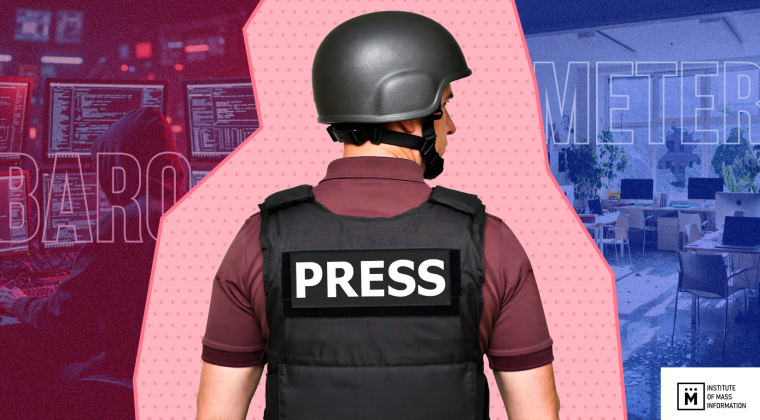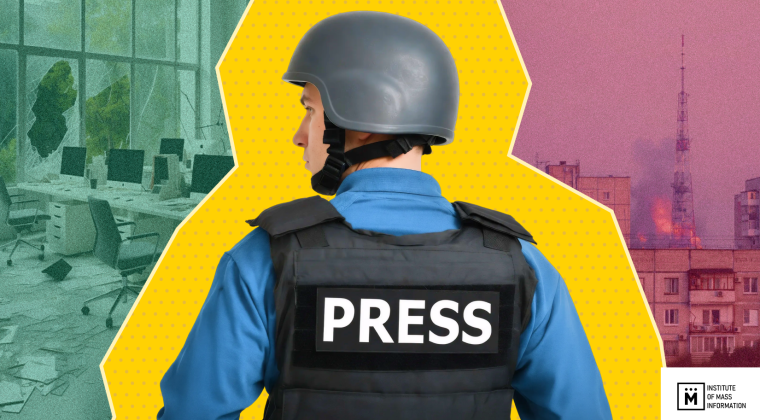In 2018, in the territory of Ukraine not under occupation, IMI registered 235 cases of violations of freedom of speech. This number is less than the one for the same period of 2017, where they registered 281 violations (for comparison, in 2016 there were 264 violations, in 2015 – 310, in 2014 – 995). These are the results of the yearly monitoring of the Institute of Mass Information (ІМІ) “Freedom of Speech Barometer”.
Based on the data of IMI study, in the first half of 2018, increase of the number of violations was observed, especially of physical aggression cases, compared to 2017. Yet in the second half of the year, approximately since August, there was certain «stabilization» of the number of violations of journalists’ rights.
«During the first half of 2018, we observed rapid growth in attacks against journalists and of physical aggression cases. At the same time, in the first half of the year we did not see any sharp «peaks». We think that this is due to several reasons: first, due to broad public response after the cruel attack against the activist Kateryna Handziuk, and an extremely negative reactions of the society and international community to this case, which, possibly, was the factor that discouraged potential attackers. Also, it is possible that journalists were also discouraged by the murder of Handziuk, especially in the regions where journalists’ criticism started to become more careful – this issue calls for some additional research. And, finally, we see traditional quiet before the storm of the election processes of 2019», IMI executive director Oksana Romaniuk said.
The main challenge for freedom of speech in 2018 was physical aggression against journalists. The categories with most frequent occurrences were obstructions, threats and attacks against journalists (for comparison, in 2017 those were obstructions, access to information, and threats). Of the total number of violations, 173 cases involved physical aggression against journalists.
The leading category of violations considering the number of occurrences relevant to it, in 2018 was the category “obstruction to lawful professional activities of journalists” – 96 cases (this number is more than the one in 2017, when there were 92 cases of obstructions). This category is firmly on the first position since the start of the year. Those who were obstructing the journalists were, just like last year, private individuals, local authorities, members of Parliament and local self-government bodies, and law enforcement officers.
The second place is held by the category “threats and intimidation of journalists” – 33 cases (in 2017, more threats were registered – 38). Those who threatened the journalists were mostly private individuals, local authorities and MPs/local council members.
The third place is held by the category “beatings and attacks” – 31 (for comparison, in 2017, 30 such cases were registered).
By the number of violations, the fourth position belongs to the category “limitation of access to public information” – 19 cases. For the same period of 2017, twice as many such cases were registered – 41, and this category was on the second place. This year, the entities that were limiting the access of journalists to public information most often, were central and local governmental agencies.
The fifth place by the number of violations belongs to cyber-attacks – 15 cases, in the same period of 2017, the registered number of such violations was the same.
The region with the most violations of journalists’ rights since the beginning of the year is still Kyiv and its oblast (97). The next ones are Mykolaivska oblast (16 cases), Dnipropetrovska oblast and Poltavska oblast (12 each), Odeska oblast (11), Lvivska oblast (10). In other oblasts, there were nine, seven, six, five, four, three, two, and one in each registered cases of violation. We have to point out that thus year Dnipropetrovska and Lvivska oblast for the first time made it to the top five of regions with most violations of journalists’ rights. At the same time, Mykolaivska and Poltavska oblasts stay in this top five list for the third year in a row.
Those who violated the journalists’ right to their profession were, based on the monitoring, private individuals, representatives of central and local authorities, and law enforcement officers.
***
In the occupied territories of Donetska and Luhanska oblasts, due to extremely limited access to these territories, IMI managed to register only two violations, (in 2017 – three). In particular, in 2018 on the separatist websites they again published the personal data of journalists of 11 Ukrainian mass media. We also remind you that the journalist Stanislav Aseev is still imprisoned by s-called “DPR” – based on different sources, since May or June of 2017.
In Crimea annexed by Russia, in 2018 there were 12 new registered cases of violations of freedom of speech (in 2017 – 16 cases). In particular, for Crimea this year was known by apprehension of citizen journalists, who emerged as a phenomenon after the independent journalism was rooted out in the peninsula.
In more details, please read about the status of freedom of speech on the website of IMI in the section “Freedom of Speech Barometer”.
Institute of mass information conducts monthly nation-wide monitoring of freedom of speech in the following categories: aggression, censoriship and limitation of access to information, economic and political pressure, legal pressure, and cyber-crimes against mass media and journalists. The monthly report includes only cases related to freedom of speech and professional journalist activities. More details about the methodology can be found here.



